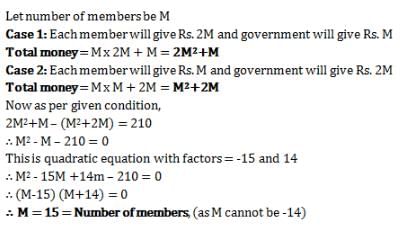Test: Problem Solving- 1 - SSC CGL MCQ
13 Questions MCQ Test SSC CGL Tier 2 - Study Material, Online Tests, Previous Year - Test: Problem Solving- 1
Alan has two more than twice as many chocolates as does Alice, and half as many chocolates as does Nadia. If Alice has ‘a’ number of chocolates, then in terms of ‘a’, how many chocolates do Alan, Alice and Nadia have?
Milk needs to be thinned to a ratio of 3 parts milk to 2 parts water. The milk-man has by mistake added water so that he has 8 liters of milk which is half water and half milk. What must he add to make the proportions of the mixture correct?
A group wanted to renovate their club. Each member contributed an amount equal to twice the number of members in the club. But the government contributed same amount as the number of members. If each member had contributed the same amount as the number of members and the government had given an amount twice the number of members, then they would have Rs. 210 less. How many members are there?
|
1366 videos|1313 docs|1016 tests
|
|
1366 videos|1313 docs|1016 tests
|



















